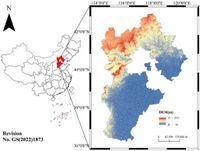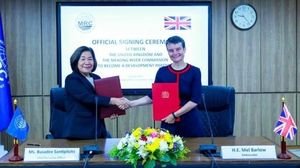Hebei Province, located in northern China, has been undergoing significant transformations in land use and the ecological product value over the past decade. A recent study published analyzes these changes meticulously, providing insights that highlight not only the trends but also the factors driving these alterations in a region that plays a pivotal role in China's ecological landscape.
The research investigated the patterns of land use, where agricultural land, forests, grasslands, and impervious surfaces cover approximately 95% of Hebei's total area. It was found that from 2010 to 2022, the ecological product value in the province experienced a dramatic shift. Initially, this value was measured at approximately 256.64 trillion Yuan in 2010, rising to a peak of 488.74 trillion Yuan by 2022, indicating a staggering growth of nearly 47.5%. However, this growth was not linear, with fluctuations observed, notably a decline before the rapid rise.
The study employed the improved equivalent factor method to account for changes in ecological product values, closely examining how land utilization modifications impact this value. Lead researcher noted, "The value of ecological products in Hebei Province from 2010 to 2022 shows a trend of rising, then falling, and then rapidly rising." This cyclical development underscores the dynamic nature of land use in the province and aligns with broader environmental shifts seen globally.
Hebei's landscape has notably changed in composition during this time frame. The research utilized the global Moran’s I index to analyze spatial correlations in ecological product values throughout various counties and districts. This method revealed clustering effects, suggesting certain high-value ecological areas were geographically linked, predominantly in the northern parts of the province, notably around Chengde and Zhangjiakou.
In addition to these quantitative assessments, the study also included qualitative analyses through the geodetector method, which identified significant influencing factors on ecological product values. The most substantial factors affecting these values were found to be population density, elevation, and slope of the land, which presented larger Q-values—indicative of their impact on ecological dynamics.
In terms of land use dynamics, the report outlines how agricultural land is transitioning to various other uses, including forest and impervious surfaces due to urbanization and development projects. Communities in Hebei are increasingly impacted by these land use decisions, necessitating strategies for sustainable management. As such, researchers emphasize the importance of timely interventions, stating, "It is necessary to put forward a strategy to improve the value of ecological products based on the change of land use in Hebei Province."
The implications of this research are profound, indicating a need for integrated approaches to economic development that also prioritize ecological restoration. The study serves as a pivotal reference in the broader context of sustainable land use and ecological product management—not just within Hebei, but as a model for similar regions facing environmental challenges.
In closing, the continuous evolution of land use and its correlation with ecological product values in Hebei Province highlights essential pathways for promoting environmental sustainability and economic resilience. As urbanization and industrial demands grow, the findings call for a balanced approach towards land management, ensuring that ecological integrity is upheld alongside human development.




